Warning: This timeline contains pictures some readers may find disturbing.
Colonel Gaddafi: Rise and fall
-
 Bloodless coup 1969
Bloodless coup 1969
-
 Emerging leader 1970s
Emerging leader 1970s
-
 Yvonne Fletcher 1984
Yvonne Fletcher 1984
-
 US air strikes 1986
US air strikes 1986
-
 Lockerbie
Lockerbie
1988 -
 Co-operation 1999-2003
Co-operation 1999-2003
-
 In from the cold 2004
In from the cold 2004
-
 UN speech
UN speech
2009 -
 Libya unravels February 2011
Libya unravels February 2011
-
 Nato attacks
Nato attacks
March 2011 -
 Tripoli falls
Tripoli falls
August 2011 -
 Killed in Sirte October 2011
Killed in Sirte October 2011
-
Bloodless coup
1 September 1969
In his youth, Muammar Gaddafi was an admirer of Arab nationalist leader Gamal Abdel Nasser. He first hatched plans to topple Libya's monarchy as a young soldier.
A charismatic figure, he received army training in the UK before returning to Libya to overthrow King Idris in a bloodless coup on 1 September 1969.
-
Early days
1970s
Col Gaddafi, seen here on the far right, set about securing his hold on power in the 1970s. He developed his political philosophy known as the Green Book and took on foreign oil interests in Libya.
He also played a key role in the Middle East oil crisis of 1973-74 and fostered links with fellow African and other regional leaders. His attempts to represent pan-African interests were not ultimately successful.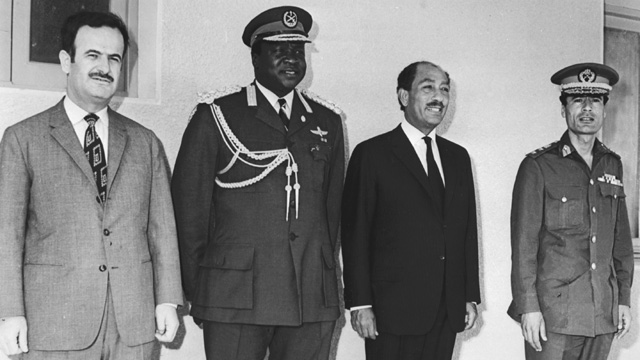
-
Yvonne Fletcher
April 1984
An anti-Gaddafi protest outside Libya's London embassy turned into a major international incident when a young police officer, Yvonne Fletcher, was shot and killed by a gunman in the embassy.
Diplomatic ties with Libya were cut and Col Gaddafi's path towards pariah status was now well established.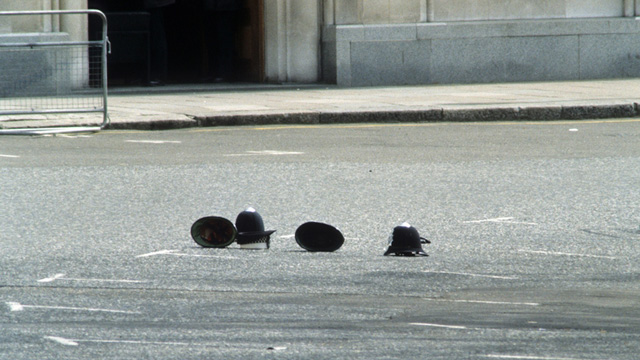
-
US attacks
15 April 1986
Col Gaddafi's courting of militant groups, including the Irish Republican Army and the Palestine Liberation Organisation earned him the "mad dog" label from US President Ronald Reagan.
The US responded to Libya's alleged involvement in a terror attack in Europe with air strikes on Tripoli and Benghazi.
Col Gaddafi was said to have been badly shaken by the bombings, in which his adopted daughter reportedly died.
-
Lockerbie
21 December 1988
The bombing of Pan-Am flight 103 over the Scottish town of Lockerbie was the next significant escalation in tensions. Libya was blamed for causing the deaths of 270 people in the air and on the ground, the worst single act of terrorism ever witnessed in the UK.
Col Gaddafi's initial refusal to hand over the two Libyan suspects to be tried resulted in a protracted period of negotiations and UN sanctions.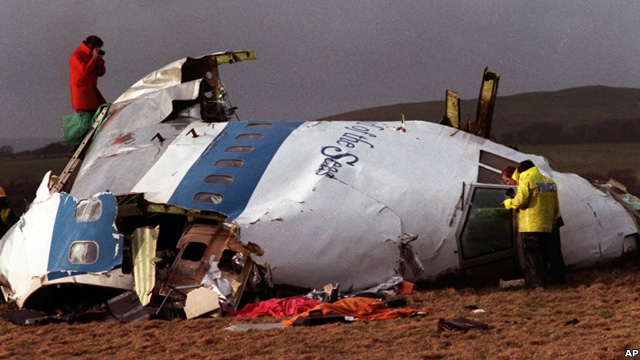
-
Co-operation
1999 - 2003
In 1999, two Libyans were handed over and tried in a Scottish court for the Lockerbie bombing, one was found guilty.
The resolution of the case, along with Col Gaddafi's subsequent admission and renunciation of a covert nuclear and chemical weapons programme, paved the way for a significant warming of relations between Tripoli and Western powers.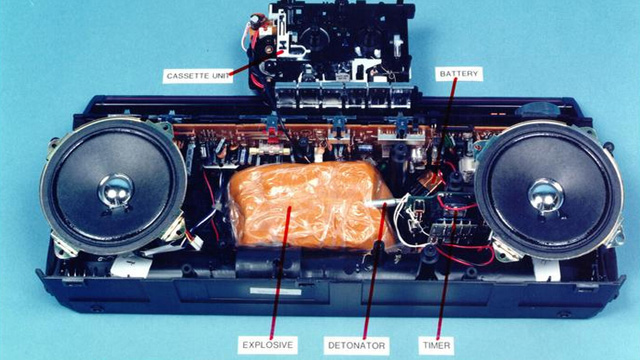
-
In from the cold
March 2004
With international sanctions lifted, Tripoli was back on the international political itinerary, allowing British Prime Minister Tony Blair, among other leading figures, to drop in at Col Gaddafi's famously luxurious Bedouin tent erected in his palace grounds.
Mr Blair visited in 2004 and again in 2007.
-
The longest speech
23 September 2009
Col Gaddafi's maverick status was confirmed when he gave his first address to the UN general assembly. It lasted 96 minutes, over an hour longer than his allotted time. The Libyan leader launched into a passionate and wide-ranging invective in which he touched on everything from the failings of the Security Council to his theory that swine flu was developed for military purposes.
-
Protests spread
February 2011
Inspired by events in neighbouring Tunisia and Egypt and sparked by the arrest of a Libyan human rights campaigner, protests against Col Gaddafi's four-decade rule began in February.
Starting in the east, where he staged his coup more than 40 years earlier, they spread across the country. Col Gaddafi remained uncompromising and vowed to crush the rebellion. -
Nato attacks
19 - 20 March 2011
With Col Gaddafi showing signs of being on the brink of crushing the rebellion, Nato launched air strikes against Libyan targets to "protect civilian lives".
Air power saved the rebels and with further outside help they eventually made progress in their ambition to oust the Libyan leader. International support for Col Gaddafi drained away over the following weeks as the rebels gained official recognition from France and other nations. -
Tripoli falls
23 August 2011
Six months after the protests began, Libya's rebels finally made it to Tripoli. With Nato air strikes having weakened Col Gaddafi's forces over many months, rebel soldiers entered the capital and soon overwhelmed his compound.
It was the beginning of the end for Col Gaddafi, who continued to issue appeals for his supporters to fight on as he went to ground. -
Killed in Sirte
20 October 2011
Col Gaddafi died after being caught by rebel forces in his home town of Sirte, a stronghold for loyalist fighters.
News of his capture came soon after rebels claimed control of the town following weeks of fierce fighting.
National Transitional Council (NTC) officials said Col Gaddafi was wounded in a gunfight and died of his injuries.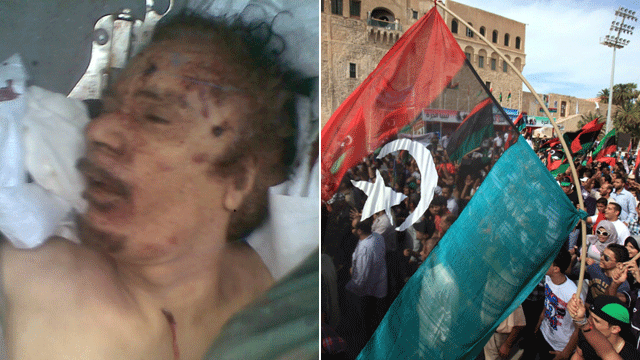
Magellan
Features
-
IS in Europe: The race to the death
Tuesday's devastating attacks in Brussels show IS's European network is still at large, despite a year of intensive efforts by security forces to close it down.
-
Project Greenglow and the battle with gravity
Scientists are debating whether it's possible to harness the power of gravity for interstellar space travel.
-
The boy who refused to leave police custody
The four-year-old boy who has become the centre of a controversy between India and Pakistan - and between his father and mother.
-
The mirth and misogyny of Andy Capp
Why, almost 60 years after he first appeared in the Daily Mirror, is a layabout lout from north-east England still so loved around the world?
~RS~q~RS~~RS~z~RS~47~RS~)

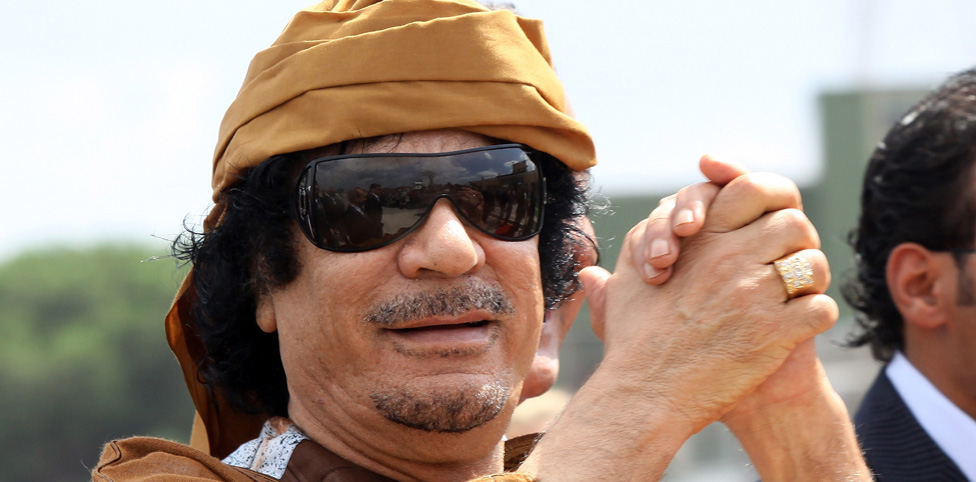
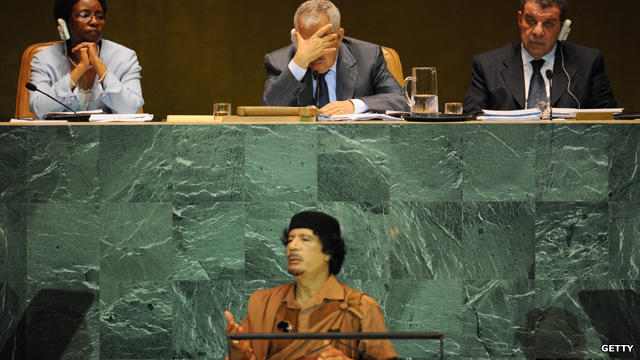


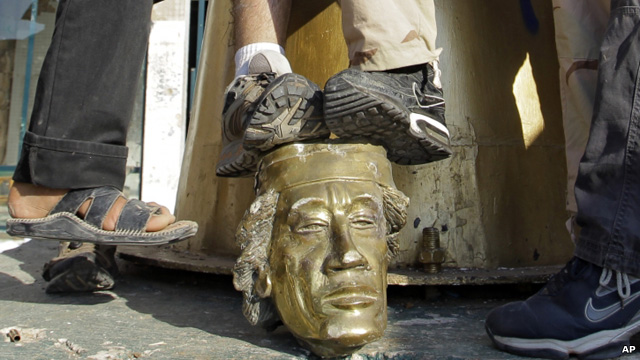
 Life under IS in Sirte
Life under IS in Sirte Nigeria rivals sign peace accord
Nigeria rivals sign peace accord